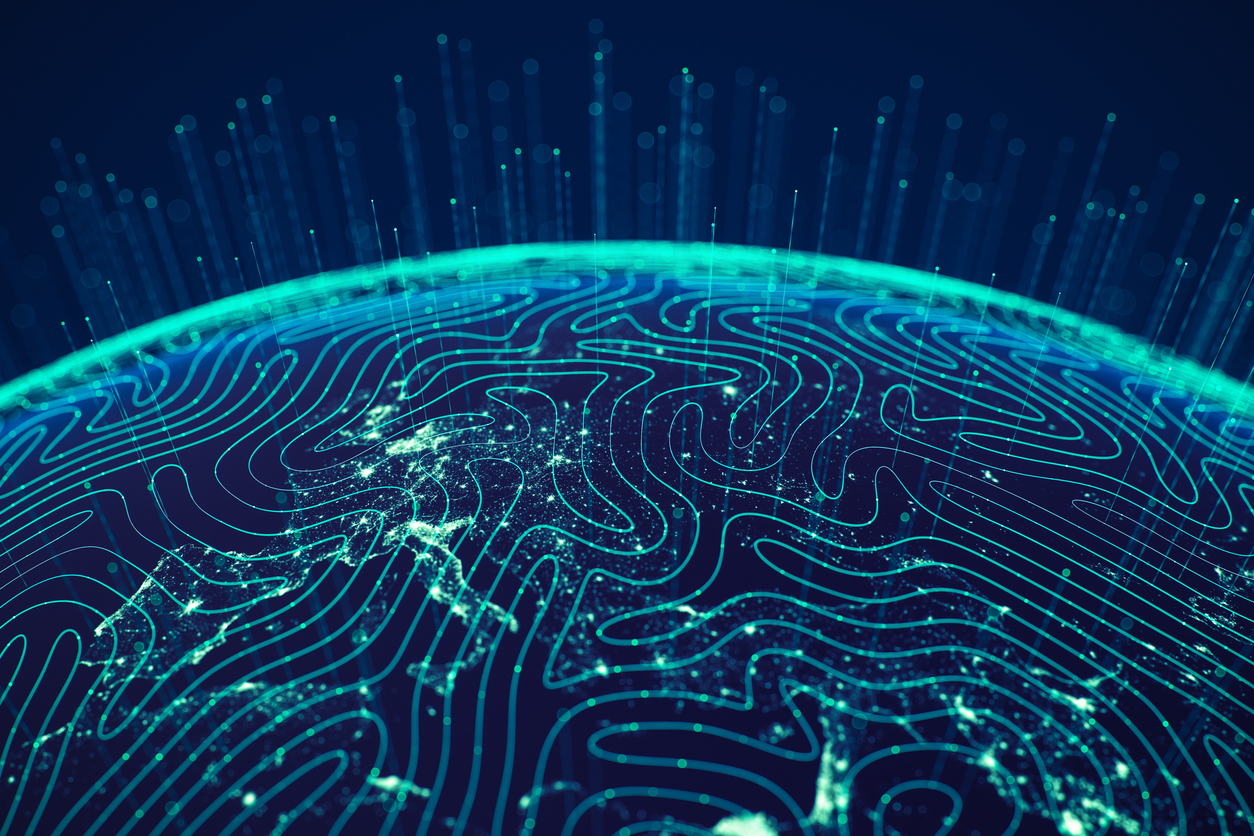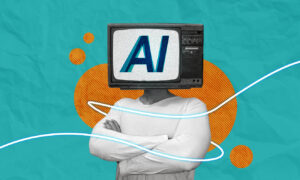AI for communicators: What’s new and what’s next
What the latest news in AI means for you.

How fast is AI evolving? It’s now reached parity with humans on a variety of tasks, including image identification, basic reading, visual reasoning and English-language understanding, according to an AI Index published by the Stanford University Human-Centered Artificial Intelligence program. That’s impressive progress in just a year, proving once again what whirlwind this industry and technology can be.
Let’s see what’s new in the world of AI and what it means for comms pros.
Tools and use cases
AI is quickly becoming embedded into not just the software, but also the hardware we use every day, a clear sign of confidence that the technology will be here to stay and something we’ll all want to have at our fingertips. The Verge reports that Logitech is introducing Logi AI Prompt Builder, a button built into a mouse or keyboard to quickly summon ChatGPT. As The Verge describes it:
The Logi AI Prompt Builder doesn’t just present you with a chatbot, it gives you preset “recipes” to help you prompt it, too. After I assigned an AI button to a Logitech mouse, I could ask it to “Rephrase” paragraphs of text, turn them into bullet points, make them shorter and more concise, or fit a specific word count. Another recipe helped me summarize press releases. And since I pay for ChatGPT Plus, I customized another recipe to generate an image.
Expect more AI-enabled peripherals to follow.
We often hear of AI-generated voices being used for nefarious purposes like deepfakes or scam phone calls. But the Salvador Dalí Museum in St. Petersburg, Fla. is using the technology to bring the voice of the late artist back. The exhibit combines ChatGPT-4 and Eleven V2 to allow visitors to “call” Dalí on a replica of his “Lobster Telephone” sculpture, Artnews reported. From there, the AI-generated voice of the artist will be able to hold a conversation with the caller. It’s a clever use of AI very much in the spirit of Dalí, and a reminder that a bit of creativity and whimsy can go a long way when testing new tech.
But it’s still important to distinguish truth from reality. That’s why Snapchat is incorporating a small, ghost-shaped watermark into AI-generated images shared outside the app. While this is a positive move, research has shown how watermarking can be a futile, if well-meaning, weapon in the fight against unscrupulous AI use.
Risks and regulation
As copyright law struggles to cope with the vast changes AI is bringing to the creative sphere, the U.S. Copyright Office has granted some protections to a novel written by AI. Wired reports that “AI Machinations: Tangled Webs and Typed Words” has been given a copyright registration that credits human Elisa Shupe for the “selection, coordination, and arrangement of text generated by artificial intelligence.” On a practical level, that means the book can’t be copied wholesale, but theoretically someone could re-order or edit the text and publish it on their own.
It’s a compromise between allowing no copyright protections and full copyright protections, and it likely won’t be the last word in this space.
Another conversation that is just beginning is around how social media platforms will protect people, especially women, from pornographic deepfakes. Meta’s Oversight Board will soon hold a hearing examining two cases of AI-generated pornography designed to resemble two prominent women, one based in the U.S., the other in India. The Oversight Board offers recommendations, not policy, but the issue of deepfakes presents a concerning issue both for brand protection and reputation management for the people affected. The outcome will likely help create a roadmap for how social media will deal with these difficult issues.
To zoom out and look at how AI is impacting geopolitics, we can look at a deal recently inked between Microsoft and Emirati AI company G42. Microsoft’s $1.5 billion investment in the company may not seem so different from other deals the company has made, but the New York Times notes it’s bigger than it seems:
It’s meant to bring an influential A.I. company into America’s orbit. G42 is seen as an increasingly important player in the Gulf and beyond: Its chairman is Sheikh Tahnoon bin Zayed, the Emirates’ top security official and a brother of the country’s ruler, and it has struck a number of high-profile business partnerships. Peng Xiao, the company’s C.E.O., was previously associated with DarkMatter, an Emirati spyware company that had employed former spies.
But G42 has had deep relationships with Huawei and other Chinese companies that U.S. officials feared could give Beijing access to advanced technology, Americans’ data and more. (At one point, Biden officials raised the prospect of sanctions on G42.) More broadly, Washington leaders have been worried about Middle Eastern countries playing the U.S. and China off each other.
It seems we might be entering a new, AI-fueled Cold War between the U.S. and China.
How will it play out?
AI at work
Some Best Buy workers will be replaced with AI interfaces, USA Today reported. While it’s not clear how many employees have lost or stand to lose their jobs, many of those impacted were members of the Geek Squad, especially those in home theater repairs and phone specialists. As USA Today put it:
The AI-powered virtual assistants are expected to help Best Buy customers troubleshoot problems with products, change delivery details and manage software, among other things, according to the news release.
The “self-service support option” will be available online, on the Best Buy app, or over the phone starting this summer.
The communications strategy behind this rollout will be critical, both internally and externally. Many customers still value a personal touch, and many employees will worry about how this will impact them. Clear, honest communication is key.
Allison Carter is editor-in-chief of PR Daily. Follow her on Twitter or LinkedIn.








Absolutely spot on, Allison! The whirlwind of AI development is both exciting and demands careful consideration for communication professionals. The ability to leverage AI tools for content creation, data analysis, and even personalized communication strategies opens doors to unprecedented efficiency and audience engagement.
I particularly loved the example of the Salvador Dalí Museum using AI to bring the artist’s voice back to life. It showcases the potential for AI to enhance creative expression and audience experiences in innovative ways. But, it also points out why the actors’ strike was so prolonged.
You are right to emphasize the ethical considerations. As AI continues to blur the lines between human and machine-generated content, transparency becomes paramount. Disinformation campaigns fueled by deepfakes are a growing concern, and communication pros can play a vital role in educating audiences on how to critically evaluate information. This is especially the case in the U.S., given we are in an election cycle.
Furthermore, the potential impact of AI on jobs within the communication field shouldn’t be downplayed. While AI can automate repetitive tasks, it can’t replace the human touch and strategic thinking required for effective communication. The focus should be on reskilling communication professionals to leverage AI as a powerful tool, not a replacement. However, that said, I was in a meeting the other day and thanks to AI an account manager, in analytics, stated he was able to evolve from managing 10-15 annual accounts up to almost 100. I can do that simple math and realize while we will still need the human touch, we won’t need as many individuals.
Overall, AI presents a transformative landscape for communication. By embracing its potential while prioritizing ethical considerations and human expertise, communication professionals can ensure they remain at the forefront of a rapidly evolving industry.
Thanks for sparking this important conversation, Allison!